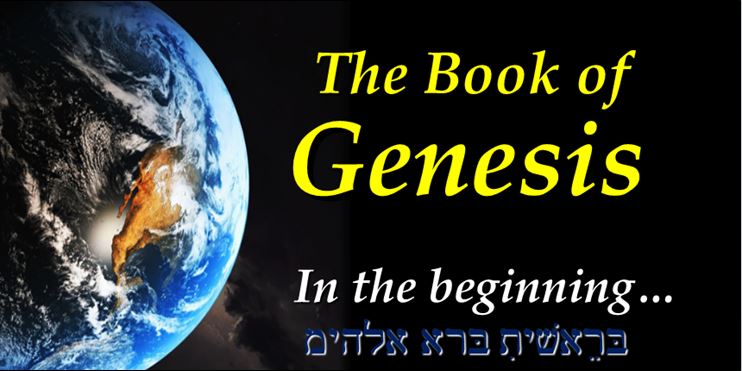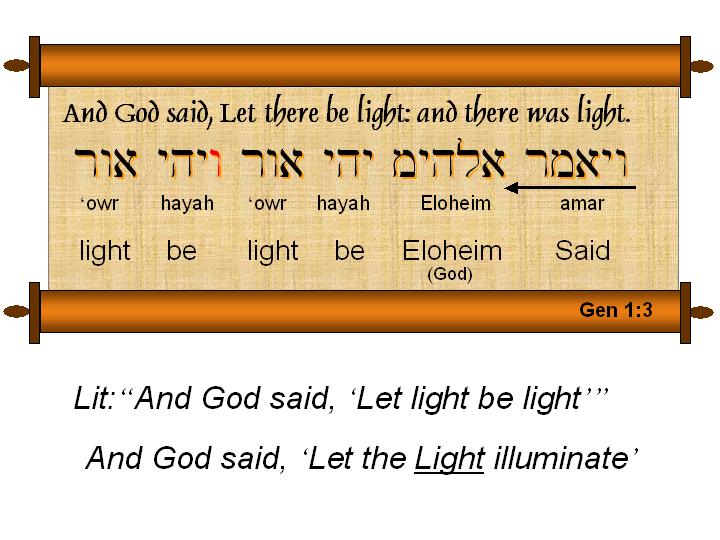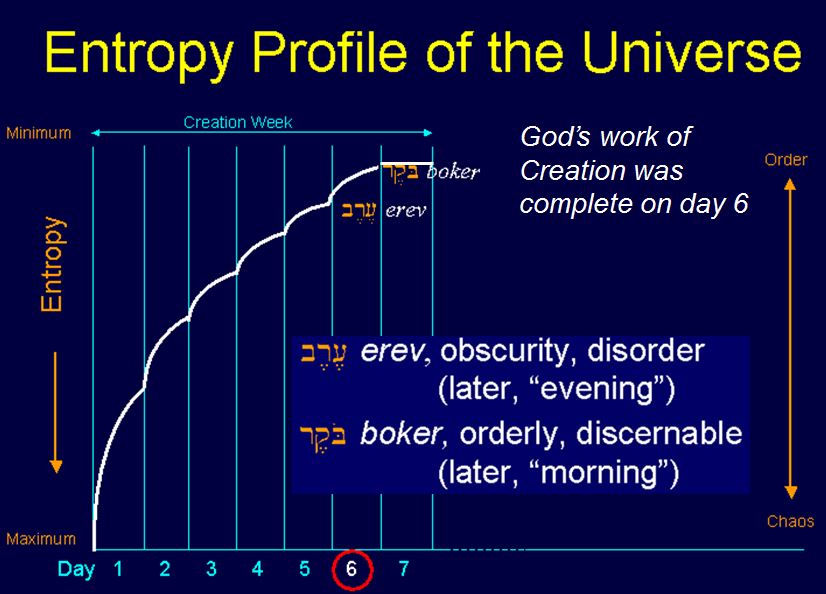Ever since God created the Earth there has been an intense battle for it. Satan presumed God was creating it for him: “To whom would the king delight to do honour more than to myself?” (Esther 6:6); but then God gave it to man! (Genesis 1:28-30)
Using deception and cunning Satan then usurped man and claimed the title deed for the Earth. He is, for now, the ‘God of this world’ (2 Corinthians 4:4) the kingdoms of this world having been delivered over to him (Luke 4:6). However, there is coming a day when “The kingdoms of this world [will] become the kingdoms of our Lord, and of his Christ; and He shall reign for ever and ever” (Revelation 11:15).
But the battle for the Earth has also been waged in a far more subtle way, for once people believed that God had created it. Of course, throughout history, there have been many wacky theories and ideas about the Earth – that it sits on the back of a giant turtle is one of the best! But in the 18th century, there was a radical shift. People went from believing the Biblical account of the Earth’s history to a theory born largely out of seances with men from Jupiter and Saturn! (Yes you did read that right!). In 1755, Immanuel Kant published his book, “Universal Natural History and Theory of the Heavens”, in it he proposed the ‘Nebular Hypothesis’ – the idea that all the planets in our solar system were the result of a large filament of material which shot off from the Sun 4 Billion years ago, cooled and then became the planets, including Earth. However, he wasn’t the first to propose this. Some years earlier Emanuel Swedenborg had claim confirmation for this hypothesis from seances with men on Jupiter, Saturn and places more distant! Pierre Simon Leplace (mathmatician) subsequently gave his endorsment despite there being serious mathmatical flaws in the theory, and although proven false, amazingly, this is still taught today.
This paved the way for geologist James Hutton, followed by Charles Lyell and then Charles Darwin to leave their mark on history, by rejecting the Biblical account in favour of man’s wisdom. This little bit of history sets the scene for our continued verse-by-verse study in Genesis.
Today, the battle for the Earth has been all but won in the minds of the masses by the ‘prince of the power of the air’ (Ephesians 2:2) “the god of this world hath blinded the minds of them which believe not” (2 Corinthians 4:4).
(Listen to the audio teaching on this web site: https://www.calvaryportsmouth.co.uk/sermons/genesis-1-2-5/
We pick up our verse by verse study in Genesis chapter 1, verse 2:
Genesis 1:2
And the earth was without form, and void; and darkness was upon the face of the deep. And the Spirit of God moved upon the face of the waters.
In an ideal world we could simply make a few comments and move onto the next verse; however, it is necessary to make mention at this point of what is known as the ‘Gap Theory’. This theory, proposed by Thomas Chalmers in 1814, suggests that there is a gap of time between verse 1 and verse 2; i.e. that God created the heavens and the earth, there was then an undisclosed period of time when, according to proponents of this view, Satan ruled on the earth over a pre-Adamite civilisation. Then, supposedly, due to the wickedness of this original world, God sent a flood – called ‘Lucifer’s flood’ – which destroyed everything from the face of the earth. It is then suggested that what we see in verse two is the result of this judgment as God plans to recreate as per the remainder of the Genesis chapter 1 account.
Those who hold to this view will try to draw attention to specific Hebrew words to make the claim that the verse should be translated as follows: “But the earth became confused and waste…”. However, respected Hebrew scholars Keil & Delitzsch, in their commentary on the Old Testament say the following: “And the earth was (not became) waste and void.” The alliterative nouns tohu vabohu, the etymology of which is lost, signify waste and empty (barren), but not laying waste and desolating. [emphasis added] (from Keil & Delitzsch Commentary on the Old Testament: New Updated Edition, Electronic Database. Copyright (c) 1996 by Hendrickson Publishers, Inc.) Thus, you will be able to find Hebrew scholars on both sides of this debate; some who lend support to the gap theory, and other who reject it out of hand.
Now, before we go on to look at the Biblical position regarding this theory, what should be addressed, is the circumstances that led to this theory in the first place. As we have already mentioned, the gap theory first surfaced in 1814. Only a few years before this, a lawyer & medical doctor turned geologist by the name of James Hutton had captured the imagination of the scientific community by claiming that the earth was not young, as the Bible indicates, but rather the earth was extremely old. He challenged the accepted idea of Catastrophism (that what we see in the world today is the result of major cataclysmic events – such as Noah’s flood), and instead proposed the idea now known as Uniformitarianism that states that things have gradually altered over eons of time.
It is against this background of popular scientific thought, all of which seeks to discredit the biblical account, that along comes Mr Chalmers, who, although no doubt sincere, proposes a theory that attempted to reconcile the Bible to ‘science’.
The mistake that was made then, and is still made today by those who choose to hold to the gap theory, is that they substitute God’s revealed truth for mans wisdom; of which God says: “I will destroy the wisdom of the wise, and will bring to nothing the understanding of the prudent. Where is the wise? where is the scribe? where is the disputer of this world? hath not God made foolish the wisdom of this world?” (1 Cor 1:19), “
As we have already noted, there will never be a conflict with science and scripture, for they both have the same Author, but we will repeatedly find conflicts arise between fallible men who seek to interpret science and history apart from God’s infallible word. Today, men like Hutton and Charles Lyell (who followed in Hutton’s footsteps) are seen as pioneers who advanced scientific thought. In reality, quite the reverse is true. By rejecting God and His word they have become fools who have erected stumbling blocks both in the path of science and faith.
The irony of this particular situation, is that inserting long periods of time in between Gen 1:1 and Gen 1:2 doesn’t actually solve the problem that it was intended to; that of reconciling secular theories with the biblical account. Hutton and Lyell et al proposed that what we see in the world around us is the result of eons of years of gradual change (this paved the way for Darwin who built on their foundation). However, for those who believe the gap theory, there is still the problem of Noah’s flood – which would have cataclysmically changed the face of the earth – and is the rational explanation for what we see in the world today. Any evidence of a ‘pre-Adamic world’ or ‘Lucifer’s flood’ would have been literaly swept away by Noah’s flood. Yes, the gap theory agrees with the millions-of-years-theorists view of ‘lots of time’, but any supposed evidence of that ‘time’ was destroyed by Noah’s flood.
So if there can be no evidence drawn from geology to support the gap theory, is there any biblical basis for it?
The answer is simply ‘none whatsoever’! Firstly, we are clearly told in Exodus 20:11 that God created the heavens, the earth, the sea and all that is in them in 6 literal days. This is the basis for our 7-day week and the reason that the Jews were told to commemorate the Sabbath on the seventh day of the week. It is important to note that God wrote this with His own finger (Ex 31:18), and it impossible for God to lie (Heb 6:18.).
Secondly, a pre-Adamite world that is destroyed for it’s wickedness would place sin and death before Adam; and yet we are clearly told: “Wherefore, as by one man sin entered into the world, and death by sin; and so death passed upon all men, for that all have sinned” (Rom 5:12). Sin and death only entered the world as a result of Adam’s transgression.
Finally, after God had finished His work of creation He declared it ‘very good’ (Gen 1:31), not “very good except for Satan running around’ but simply ‘very good’. Satan could not have fallen at this point. Furthermore, Ezekiel tells us that before he fell, Satan was actually in Eden, the garden of God, in an un-fallen state (Ezekiel 28:13). Paul tells us that it was pride that caused Satan to fall (1 Tim 3:6). And Isaiah tells us that Satan wanted to be ‘like God’. Now, bear in mind that no angel was made in the image of God – but Adam was! Clearly, Satan was jealous of Adam’s position, being made in the image and likeness of God, and so Satan also wanted to be ‘like God’, and that was pride, and that led to his fall, and that led to his hatred of humanity, and that led to Genesis chapter 3 – which we will deal with when we get there!
Suffice to say, there is not a single verse in the Bible that so much as hints at the fact that Satan rebelled in the dateless past, before the days of creation. Or that he was ever given dominion over the earth (he did, of course, steal it from Adam, and holds the title to the earth for now cf. Luke 4:6 / 2 Cor 4:4). In fact, we are told in the book of Job (Job 38:7) that when God created the earth, ALL the angels sang for joy. If all means all, then it has to include Satan – who at that time had not yet rebelled.
Thus, the theory that Satan once ruled over a pre-Adamite world is pure fiction and not Biblical. The only reason to invent such a story is to explain what was going on in a pre-Adam world. The only reason to believe there was a pre-Adam world is to allow for the earth being billions of years old. The only reason to want the earth to be billions of years old is to fit in with the secular, God-rejecting ‘scientists’ simply because you are not prepared to take God at His word.
It has taken a number of words to rebut this false theory, a theory that need never have existed in the first place if God’s word had been taken seriously, or even just read! Once again, God says what He means and means what He says! Never fear the wisdom of man if it contradicts the Word of God. God’s Word will endure FOREVER!!
Genesis 1:3
And God said, Let there be light: and there was light.
The stage has been set, and as we come to verse three the lights go on and God’s play begins. The darkness and brooding of verse two now give way to the light; this is something so profound that it requires us to stop and consider what is going on here.
If I were to ask the question: ‘What is darkness?’ how would you answer? Let’s put it another way: ‘How do you measure darkness?’ If you think long and hard you will come to the realisation that darkness does not actually exist in and of itself; darkness is simply the absence of light. We can measure light, but we can only ‘measure’ darkness by the amount (or lack) of light present. In Job 38 God gives Job a science quiz and, among other things, asks him “Where is the way where light dwelleth? and as for darkness, where is the place thereof” (Job 38:19). Light moves, darkness is fixed.
Now, the common understanding of this verse is that God says: ‘Let there be light’, at which point light appears; and that is certainly what happens. However, if we look at the Hebrew (which reads from right to left), we find that what God actually says is: “Be light, be light” or we could say: “Let light be light”. Another way we could render this would be: “Let the Light illuminate”, and now we begin to see something incredible! Who is The Light? Jesus Christ!
In 1st John we are told that “God is light, and in him is no darkness at all”( 1 John 1:5). This is also explained in the opening of John’s gospel: “In the beginning was the Word, and the Word was with God, and the Word was God. The same was in the beginning with God. All things were made by him; and without him was not any thing made that was made. In him was life; and the life was the light of men. And the light shineth in darkness; and the darkness comprehended it not. There was a man sent from God, whose name was John. The same came for a witness, to bear witness of the Light, that all men through him [i.e. the Light] might believe. He was not that Light, but was sent to bear witness of that Light. That was the true Light, which lighteth every man that cometh into the world.” (John 1:1-9)
Thus, from these verses we see that God, in the person of Jesus, is the Light, and the creator of all things. He Himself said: “I am the light of the world: he that followeth me shall not walk in darkness, but shall have the light of life”. (John 8:12). Was this just a metaphor? Apparently not, for in Revelation 21:23 we read: “And the city had no need of the sun, neither of the moon, to shine in it: for the glory of God did lighten it, and the Lamb is the light thereof.” (Rev 21:23).
Another verse that sheds some light on this subject (pun intended!) is 2 Corinthians 4:6: “For God, who commanded the light to shine out of darkness, hath shined in our hearts, to give the light of the knowledge of the glory of God in the face of Jesus Christ”. Here Paul is referring to the verse we are studying (Genesis 1:3), but notice what we are told: God commanded the light to shine. For God to command the light to shine, the light had to be in existence prior to this point; in other words, it was not created but was pre-existent!
This would seem to be confirmed in Isaiah 45:“I form the light, and create darkness”(Isaiah 45:7). The Hebrew word for ‘form’ is Yatsar meaning to ‘fashion, form, frame, make through the squeezing into shape’. In other words, it is working with something that already exists. However, in contrast to this, create (darkness), is the Hebrew word bara, meaning to ‘create out of nothing’. God does indeed create darkness (out of nothing) simply because He is Light. The fact that He is light makes it possible for darkness to exist. The same idea is carried on in the second part of the verse where we read: “I make peace, and create evil: I the LORD do all these things”. Many people have struggled with this verse because they think it makes God the author of evil; until, of course, you realise that, just as darkness is the absence of light, so evil is the absence of God. Evil exists because of the absence of God in the hearts of those who reject God. God does not ‘form’ (yatser) evil from something that already existed, He ‘causes’ it to exist (bara) out of nothing – i.e. it hasn’t always been there. It only became a possibility with the existence of beings (angels and humans) who have the power of choice – choice that allows them to reject God.
One final though before we move on: If God commanded Jesus, who is Light, to ‘illuminate’ the world (as I believe this verse is saying), and we know from Colossians 1:16-17 that Jesus created all things that exist, then, we could legitimately say that ‘Light created all things’. Why am I making this point? Well, simply because of the following:
Particle physicists know that each particle (the smallest physical object – smaller than an atom) has an anti-particle. If a particle and anti-particle combine they will annihilate each other and emit a photon (the smallest unit of light). What’s provocative is that it’s believed that this reaction could be reversible. This would mean that, from a photon (a single unit of light), it would be possible to ‘create’ a particle and its corresponding anti-particle. In other words, some particle physicists now believe that all you would need to create matter is light! – and what has the Bible said for thousands of years? ‘In the beginning God – the one who is Light – created all things!!
Genesis 1:4
And God saw the light, that it was good: and God divided the light from the darkness.
We are told that the light ‘was good’, immediately I am reminded of Mark 10:17-18 “And when he was gone forth into the way, there came one running, and kneeled to him, and asked him, Good Master, what shall I do that I may inherit eternal life? And Jesus said unto him, Why callest thou me good? there is none good but one, that is, God”.
We will see in the next verse that this division between the light and darkness is what becomes daytime and night-time, but notice that this is before the Sun is made. Thus God is showing something more profound by this action; something that is amplified in the New Testament:
“Ye are all the children of light, and the children of the day: we are not of the night, nor of darkness.” (1 Thess 5:5). In God making this division we see His foreknowledge of what was to come: that the pinnacle of His creation – mankind – would reject Him and choose darkness. “And this is the condemnation, that light is come into the world, and men loved darkness rather than light, because their deeds were evil”(John 3:19). Thus, by the separating of light and darkness, we see God setting a daily reminder of the choice each of us has, to be children of the day or children of the night. It is significant to note that ultimately, in the new heaven and new earth, there will be no night – the choice will already have been made. (cf. Rev 21:25 / 22:5).
Genesis 1:5
And God called the light Day, and the darkness he called Night. And the evening and the morning were the first day.
Building on what we have just said, God allows there to be a period of time when darkness rules. It is interesting to note what Paul said to the Thessalonians: “For they that sleep sleep in the night; and they that be drunken are drunken in the night. But let us, who are of the day, be sober, putting on the breastplate of faith and love; and for an helmet, the hope of salvation.” (1 Thess 5:7-8). Once again, there is a choice to be made.
Have you ever wondered why ‘sin’ comes alive at night time? From unsavoury TV, to night clubs, to drunkenness, to prostitution, to brawling; all these flourish under the cover of darkness, when the light is withdrawn for a time.
This verse closes with a phrase that will repeat on each successive day of creation: ‘And the evening and the morning…’ Traditionally, this is why the Jewish day begins in the evening. However, it may be that ‘evenings’ and ‘mornings’ are not what is in view here at all. One hint of this is the fact that on day-7 there is no evening and morning recorded in the text. Now, we obviously know that there was an evening and morning on day-7, so why is it not mentioned?
A look at the Hebrew here reveals an interesting possibility.
The Hebrew word for ‘evening’ is Erev, but originally it appears to have meant ‘Obscurity, a mixture, disorder etc.’. In contrast, the Hebrew word for ‘morning’ is Boker which originally seemed to indicate ‘becoming discernable, distinguishable, relief of obscurity, etc.’
We know that as the evening approaches, things become less clear, they loose definition. But when the morning comes everything becomes discernable. Hence it is easy to see why these two words have come to be used to refer to evening and morning. If however, we take their original meanings, we find that at the end of the first day we have disorder leading to order. This pattern repeats each successive day as God’s creation ‘takes shape’ and each successive day brings a greater degree of order, right up until the end of the 6th day, then on the 7th day God rests from His labour and hence, no further increase in order, no erev and boker, all was then complete.
Science talks of ‘entropy’, the 2nd Law of Thermodynamics, the universally acknowledged idea that things are running down, going from order to disorder; Things loose information if left to their own devices, they do not gain information. Things go from tidy to untidy, not the other way around! This flies right in the face of evolution, which has to completely ignore this scientific law to make its preposterous claim that things have added information by chance mutation (mutations themselves being a loss or scrambling of existing information!). Things have not, nor cannot be improved, increase in information or get better simply by natural mechanisms.
In regard to the creation week, it would seem that the ‘evenings’ and ‘mornings’ (erev & boker) are actually decreasing steps of entropy, as the world goes from being ‘without form and void’ to the perfection of God’s completed work, which He declares to be ‘very good’.
(Credit to Dr Chuck Missler for this insight: www.khouse.org)
Sadly, in Genesis 3 we get to the ‘Fall of man’ when, not only man, but all creation is cursed, and from that moment the universe the world and everything in it starts to wind down.
“Of old hast thou laid the foundation of the earth: and the heavens are the work of thy hands. They shall perish, but thou shalt endure: yea, all of them shall wax old like a garment; as a vesture shalt thou change them, and they shall be changed” (Psalm 102:25-26)





